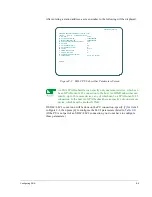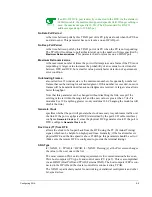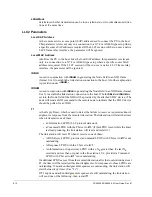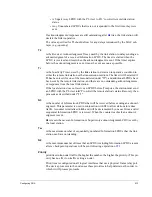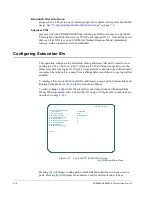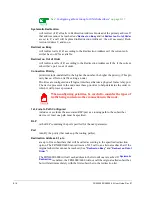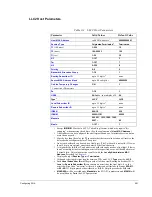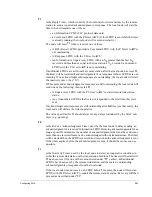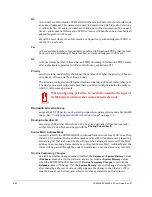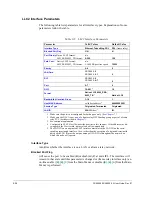
Configuring SNA
9-13
●
A Supervisory LPDU with the P bit set to B'1,' to solicit remote link station
status.
●
Any Unnumbered LPDUs that were not responded to the first time they were
sent.
If acknowledgments/responses are still outstanding after
N2
tries, the link station will
declare the link inoperative.
The value specified for
T1
should allow for any delays introduced by the MAC sub-
layer (e.g., queuing).
T2
is the Receiver Acknowledgment Timer, used by the link station to delay sending an
acknowledgment of a received Information LPDU. The timer is started when the
LPDU is received and reset when the acknowledgment is sent. If the timer expires
before the acknowledgment is sent, it must be sent as soon as possible.
Ti
is the Inactivity Timer, used by the link station to detect an inoperative condition in
either the remote link station or the transmission medium. The timer will be started if
T1
has been reset (for one of the reasons listed under "
T1
"), and additional LPDUs have
been sent by the remote link station, and there are no outstanding acknowledgments
or responses from the local link station.
If the local station does not receive an LPDU before
Ti
expires, the station must send
an LPDU with the P bit set to
B'1'
to solicit the remote station's status. Recovery then
proceeds as described under "
T1
."
N3
is the number of Information LPDUs that will be received before sending an acknowl-
edgment. This parameter is used in conjunction with
T2
to allow stations to reduce
traffic. A counter is initialized to
N3
, and will be decremented by one each time a valid
sequential Information LPDU is received. When the counter reaches
0
an acknowl-
edgment is sent.
N3
is reset whenever an Information or Supervisory acknowledgment LPDU is sent by
the local station.
Tw
is the maximum number of sequentially numbered Information LPDUs that the link
station can have outstanding.
N2
is the maximum number of times that an LPDU (including Information LPDUs resent
after a checkpoint operation) will be sent following expiration of
T1
.
Priority
prioritizes intra-nodal traffic; the higher the number, the higher the priority. (This pri-
ority has no effect on traffic exiting a node.)
Priorities are configured on all logical interfaces that use a physical frame relay port.
The device processor in the node uses these priorities to help determine the order in
which it will process protocols.
Summary of Contents for Netlink FRX4000
Page 2: ......
Page 16: ...xiv FRX4000 FRX6000 4 0 User Guide Rev 01 ...
Page 17: ...Section I Getting Started ...
Page 18: ......
Page 24: ......
Page 37: ...Section II Configuration ...
Page 38: ......
Page 52: ......
Page 78: ......
Page 106: ...7 24 FRX4000 FRX6000 4 0 User Guide Rev 01 ...
Page 142: ...8 36 FRX4000 FRX6000 4 0 User Guide Rev 01 ...
Page 186: ......
Page 216: ......
Page 266: ......
Page 273: ...Section III Operation ...
Page 274: ......
Page 296: ......
Page 324: ......
Page 376: ......
Page 377: ...Section IV Appendices ...
Page 378: ......
Page 384: ......
Page 390: ......
Page 396: ......
Page 400: ......
Page 405: ...Menu Structure E 5 ...
Page 406: ...E 6 FRX4000 FRX6000 4 0 User Guide Rev 01 ...
Page 425: ......
Page 426: ......







